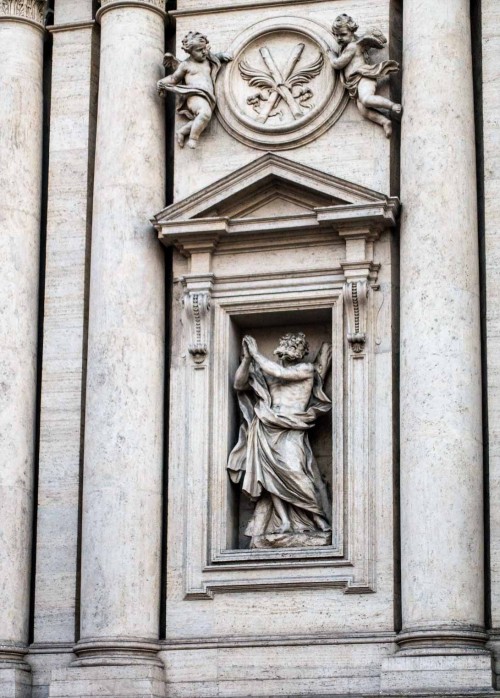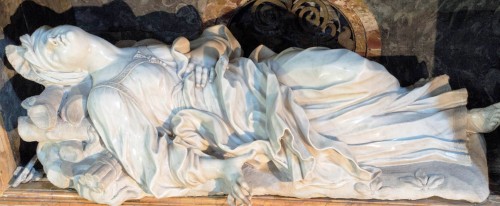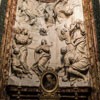
Ercole Ferrata and Gian Lorenzo Bernini, tombstone of cardinal Pimentel in the side enterance, Basilica of Santa Maria sopra Minerva

Ercole Ferrata, tombstone of Cardinal Carlo Bonelli, Basilica of Santa Maria sopra Minerva

Ercole Ferrata, The Death of St. Emerentiana, side altar in the Church of Sant’Agnese in Agone

Ercole Ferrata, statue of St. Catherine of Siena, Chigi Chapel, Church of Santa Maria della Pace

Ercole Ferrata, figure of St. Joseph, Gavotti Chapel, Church of San Nicola da Tolentino

Ercole Ferrata, tombstone of Pope Clement IX, allegory of Charity (Caritas), Basilica of Santa Maria Maggiore

Ercole Ferrata, monument of cardinal de Sluse (on the right), Church of Santa Maria dell’Anima

Ercole Ferrata, statue of St. Andrew d’Avellino, façade of the Basilica of Sant’Andrea della Valle

Ercole Ferrata, statue of St. Andrew, façade of the Basilica of Sant’Andrea della Valle

Ercole Ferrata, The Death of St. Emerentiana, fragment, Church of Sant’Agnese in Agone

Ercole Ferrata, statue of St. Agnes, Church of Sant’Agnese in Agone

Ercole Ferrata, tombstone of cardinal Bonelli, two angels supporting the tondo of the deceased, Basilica of Santa Maria sopra Minerva

Ercole Ferrata, St. Bernardine of Siena, Chigi Chapel, Church of Santa Maria della Pace

Ercole Ferrata and Melchiorre Caffà, main altar of the Chapel of St. Thomas of Villanova, fragment, Basilica of Sant’Agostino

Ercole Ferrata, figure of St. Anastasia in the main altar of the Basilica of Sant’Anastasia

Ercole Ferrata, Angel with a Cross, Sant’Angelo Bridge

Ercole Ferrata and Dominico Guidi, Vision of St. Nicholas of Tolentino, main altar of the Church of San Nicola da Tolentino

Ercole Ferrata and Melchiorre Caffà, main altar in the Chapel of St. Thomas of Villanova, Basilica of Sant’Agostino

Ercole Ferrata, statues of two saints in the lower part and angel (on the left) on the cornice of the façade of the Basilica of Sant’Andrea della Valle

Ercole Ferrata, funerary monument of Bernardino Lorenzo Spada, Church of San Girolamo della Carità

Ercole Ferrata, tombstone of Giulio del Corno, Church of Santissimi nomi Gesù e Maria

Ercole Ferrata, Minerveo obelisk in front of Basilica of Santa Maria sopra Minerva

Ercole Ferrata, statue of the pope – tombstone of Clement X, Basilica of San Pietro in Vaticano
This sculptor, along with his fellow artist Domenico Guidi were some of the most important albeit secondary artists in XVII-century Rome, who despite their talents did not step onto the salons of the prominent clients at that time. Ercole also did not possess the imagination or talent, which was bestowed upon his master Gian Lorenzo Bernini, but his sculptures full of temperament reflect his master without a doubt, as is the case with St. Anastasia similar in her ecstatic pose to St. Teresa. However, Ferrata was an outstanding executor, an accurate master in the processing of material, which he could often fill with a lively spirit.
























































